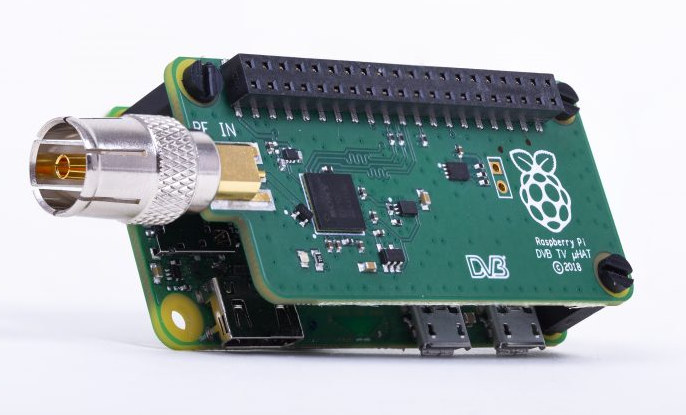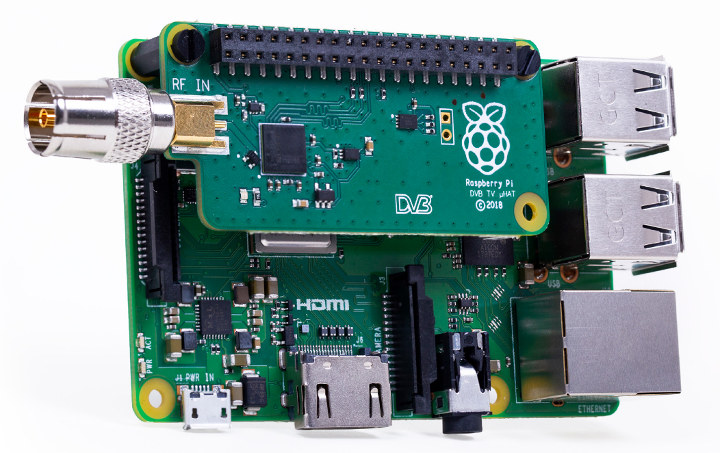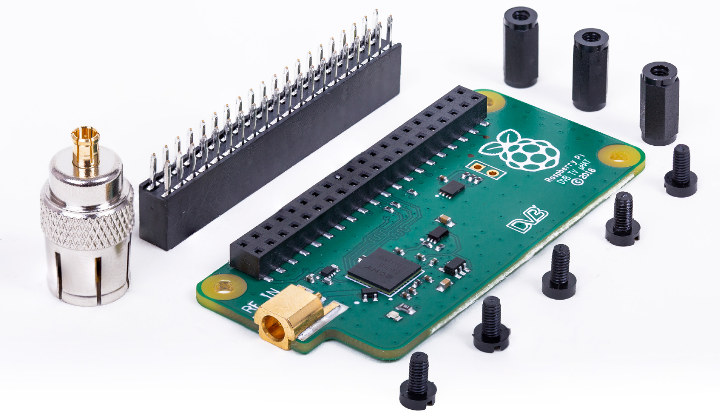The Raspberry Pi foundation has just launched another official HAT for their maker boards with the Raspberry Pi TV HAT based on Raspberry Pi Zero form factor, and is equipped a DVB-T2/T tuner in order to convert your board into a Linux based digital TV receiver and recorder.
Raspberry Pi TV HAT specifications:
- Sony CXD2880 TV tuner
- Supported TV standards
- DVB-T2 (1.7MHz, 5MHz, 6MHz, 7MHz, 8MHz channel bandwidth
- DVB-T (5MHz, 6MHz, 7MHz, 8MHz channel bandwidth)
- Reception frequency: VHF III, UHF IV, UHF V
- RF coaxial input for antenna connection
- RPi Interface – 40-pin RPi header
- Dimensions – 65 x 30 mm (half-size HAT)
- Operating temperature – 0–50°C

The Raspberry Pi TV HAT is also known as the Raspberry Pi DVB TV μHAT based on the markings on the board’s silkscreen. The add-on boards follows a new HAT specification called the “half-size HAT” matching Raspberry Pi Zero board’s dimensions.
Instructions to use the TV tuner with TVHeadEnd have been provided by the foundation, and once this is setup you can watch the streaming in compatible apps such as TvhClient, Kodi, or OMXPlayer. It’s also possible to watch TV in a browser or by copying the link to VLC Player. Raspberry Pi Zero / Zero W boards are fine to act as streaming servers, but if you plan to watch video on your Raspberry Pi board then RPi 2, 3 or 3 B+ boards are recommended.

Another advantage of the new “half-size HAT” is that it does not cover the MIPI DSI and CSI ports of the larger Raspberry Pi boards as shown in the photo above.
The TV HAT comes with set of mechanical spacers, a 40-way header, and an aerial adapter. You’ll need your own Raspberry Pi, TV antenna, and TV license if required by your country (e.g. the TV license in the UK).
The TV HAT sells for $21.50 + tax which ends up at £19.99 and €21.95 on respectively ModMyPi or Pi3G websites, and is only available in Europe for now. You’ll find more details and distributors on the product page.

Jean-Luc started CNX Software in 2010 as a part-time endeavor, before quitting his job as a software engineering manager, and starting to write daily news, and reviews full time later in 2011.
Support CNX Software! Donate via cryptocurrencies, become a Patron on Patreon, or purchase goods on Amazon or Aliexpress





